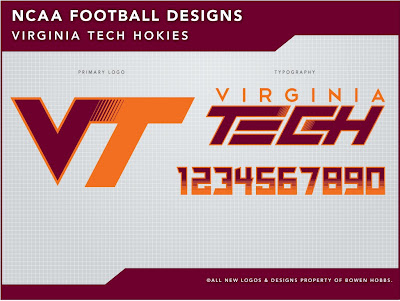
By Bowen Hobbs
On Sunday, Canada had their version of the Winter Classic: the Heritage Classic. The Montréal Canadiens were in Calgary to play the Flames. Both teams wore throwback inspired uniforms, with the Habs wearing a design a throwback to their mid-70s-to-mid-90s look (the only difference being the outline on the numbers). Calgary, on the other hand, based their uniforms on the Calgary Tigers of the Western Canada Hockey League. The striping is from the Tigers, but is paired with a deeper red and the Flames' athletic gold. In fact, their were quite a few nifty design nuances on the Flames' 2011 Heritage Classic uniforms:
The Stripes
The striping pattern looked great on TV. It was unique, classic, and cool all at the same time. It's a wonder more teams haven't considered bold striping pattern during the Fauxback Era of NHL uniforms. Although some have said the stripes are Ronald McDonald-esque, I didn't find it distracting at all, not to mention Ronald's getup is mostly yellow with sections of red and white striping, not mostly deep red with red and yellow striping. The use of this bold pattern was continued on the socks, which really showed a completeness of the design when everything was worn together.
Lace-Up Collars
The uniforms, like many fauxbacks, use the lace-up style of collar. I'm all for lace-up collars, and this fauxback definitely fit in with the style of them.
A Darker Red
Yes, the red was darker than the Flames' standard red. And the slight hue change looked pretty good, especially considering that red was the darkest color in the entire scheme, instead of black, which the team uses on their standard uniforms. More importantly, the beige numbers were plenty legible against the red and yellow background on the chest-striped sweater.
Beige Breezers
I thought this was particularly interesting because there really aren't any teams that use light breezers. The closest examples I could find were the Rangers and Blue Jackets wearing red breezers with royal or navy jerseys. Not a single teams wears white, silver, metallic gold, athletic gold, or even orange breezers, and then Calgary opts for beige. Although not a modern convention, it worked very well within the context and feel of the uniform.
All in all, I think Calgary's Heritage Classic uniforms were a huge success. The design took some chances, but each decision was made well and the uniforms had a great aesthetic.
When It Lightnings, It Pours
Yup, the Lightning have already made changes to their new uniforms. The have added black trim around the numbers and lightning bolts on the pants. Good ideas, sure, but the execution isn't quite there. The jersey crest and striping has no outlines, while the lightning bolts on the pants have a single outline and the numbers are double outlined. This apparently had to do with fan response, which I'm glad the team executives were savvy enough to take into account. The double outline on the numbers seems the most unnecessary because a single outline would have accomplished what the fans wanted (an added color) while maintaining some semblance on consistency with the treatment of the bolts on the pants.
Designer's Corner
Yup. When it lightnings, it really does pour. This week's design is for the one and only Tampa Bay Lightning. When the Lightning unveiled their new duds, I was bothered by a few of the set's elements, from the two-color scheme that immediately evoked thoughts of the Leafs to the lack a certain signature elements such as the lightning bolts on the breezers and "Victory Stripes". While the lightning bolts are back and the numbers have been altered to showcase a double-outline, the set still leaves a lot to be desired.
My concept uses some of the aspects from the current (upcoming) scheme, yet incorporates some newer elements. I wanted to keep the idea of simplicity, but I also knew that I had to create a look that was uniquely Tampa Bay. This means I couldn't use just royal and white, since it is too similar to Toronto. It also meant I shouldn't add yellow due to the similarities such a combination would have with St. Louis. Ultimately, I decided on royal and silver. On the home uniforms, I used the Michigan Wolverines/Oakland Raiders treatment: no white. This allows for the team's signature look, the home uniform, to be just that: signature. The primary logo is based on the sleeve patch the team plans to wear next season. The numbers are the current (soon to be previous) version, except without the outlines. The secondary logos and wordmarks are new.
The home uniforms use just royal and silver and retain some of the design decisions from the upcoming uniforms. I broad single stripe is placed across the sleeves, hem and socks. However, the breezers have the team's trademark bolts, while the jerseys retain the classic "Victory Stripes" although I moved them down from the armpit to the side. The concept is still the same: the stripes show when a player is raising his arms to celebrate a goal or a win. This just removes the slight ridiculousness of placing a design element in the armpits. The away uniforms use the two-color logo with silver and blue being present. However, aside from that and the bolts on the breezers, the uniforms are exclusively blue and white. And for those who like the Lightning in black and blue, the third combines those two colors (with white) in a traditional way and features a new BOLTS wordmark that is consistent with the identity, unlike the current third.




Feel free to leave a comment regarding the 2011 Heritage Classic, the Lightning concept above, a=or anything sports branding related.



















